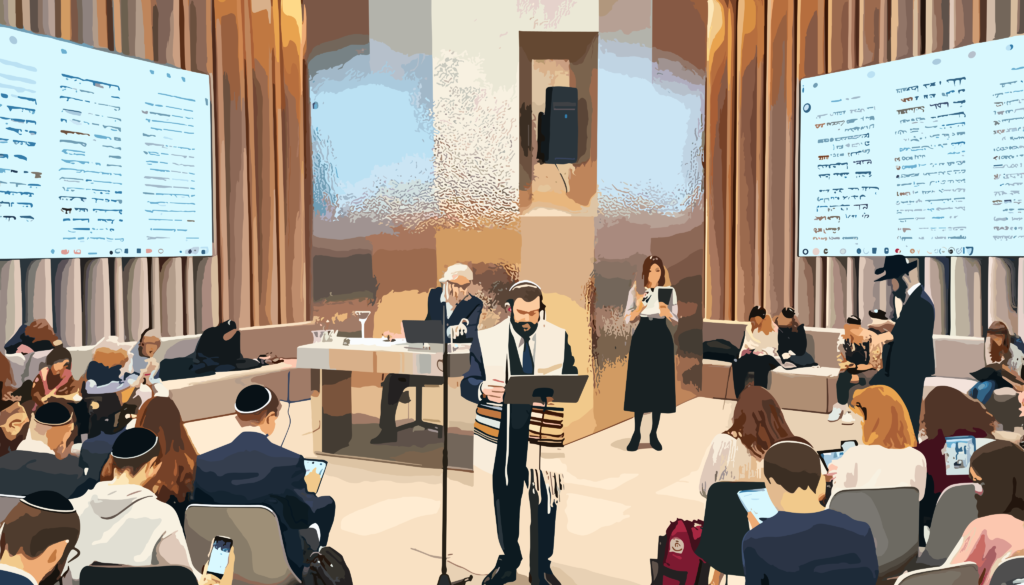The Importance of Rabbis and Synagogues Using Livestream to Connect

In recent years, the digital transformation has reached every corner of society, including places of worship. Among these, Jewish communities have seen a significant shift in how they practice faith, celebrate traditions, and foster community. Rabbis and synagogues have increasingly turned to livestreaming as a tool to connect with congregants, both near and far. This adoption of technology has not only changed the landscape of Jewish worship and learning but also highlighted the importance of digital platforms in maintaining and strengthening community bonds. This article explores the multifaceted benefits and implications of livestreaming for rabbis and synagogues.
Bridging Physical Distances
The primary advantage of livestreaming services and events is the ability to bridge physical distances. For congregants who are unable to attend services due to health issues, geographical separation, or mobility challenges, livestreaming offers a way to participate in religious observances from the comfort of their homes. This inclusivity ensures that no one is left out of the communal experience, fostering a sense of belonging and community cohesion.
Expanding Educational Reach
Rabbis have traditionally played a pivotal role in the education of their communities. Through livestreaming, their reach is exponentially expanded, allowing them to share teachings, Torah study sessions, and educational workshops with a global audience. This digital platform democratizes access to Jewish learning, making it possible for anyone with internet access to engage with Jewish texts, traditions, and thought leadership.
Fostering Interconnectivity During Significant Times
Jewish holidays and life cycle events such as weddings, bar and bat mitzvahs, and funerals hold profound significance. Livestreaming these events ensures that family members, friends, and community members who cannot physically attend can still be part of these crucial moments. This interconnectivity strengthens communal bonds and supports the emotional well-being of both individuals and the broader community.
Encouraging Participation and Engagement
Livestreaming can also enhance participation and engagement among congregants. Interactive features such as live chats, Q&A sessions, and virtual breakout rooms allow for real-time engagement that can mimic, to some extent, the dynamics of in-person gatherings. This interactivity encourages more active participation in services and events, fostering a more engaged and connected community.
Navigating Halachic Considerations
The integration of technology into Jewish worship and communal life raises important Halachic (Jewish legal) considerations. Rabbis and religious authorities have been navigating these challenges, seeking ways to embrace technology while adhering to Jewish law. The use of pre-set timers for livestream equipment and other innovative solutions have been explored to ensure that the sanctity of the Sabbath and other religious observances are maintained.
Supporting Community Well-being
The sense of community well-being has been particularly highlighted during times of crisis, such as the COVID-19 pandemic. Livestreaming has played a crucial role in maintaining community connections when physical gatherings were not possible. By providing a digital space for communal prayer, learning, and support, livestreaming helped many navigate the challenges of isolation and uncertainty.
Enhancing Accessibility
Beyond bridging geographical distances, livestreaming makes Jewish worship and learning more accessible to those with disabilities or those who might feel intimidated by attending a synagogue in person. This inclusivity is a significant step towards creating a more welcoming and accommodating religious environment for all.
Preserving and Sharing Tradition
Livestreaming also offers an opportunity to preserve and share Jewish traditions with future generations. Recorded livestreams can serve as a digital archive of religious teachings, ceremonies, and community events, providing a valuable resource for education and cultural preservation.
Challenges and Considerations
While the benefits are clear, the shift to digital platforms also presents challenges. Issues of digital divide, privacy concerns, and the potential loss of personal connection warrant careful consideration. Rabbis and synagogue leaders must navigate these challenges thoughtfully, ensuring that the digital expansion of their communities respects the values and traditions of Judaism.
Conclusion
The use of livestreaming by rabbis and synagogues represents a significant evolution in how Jewish communities connect, learn, and worship. This digital tool has the potential to enhance inclusivity, education, and community cohesion, bridging distances and bringing together individuals from across the globe. As Jewish communities continue to explore and integrate technology into their practices, the potential for innovation and connection is boundless. However, it is essential that this journey respects and adheres to Jewish law and values, ensuring that the essence of the community is preserved even as it expands into the digital realm. The importance of livestreaming in connecting rabbis and synagogues with their congregants is undeniable, offering a glimpse into the future of religious practice and community life.
